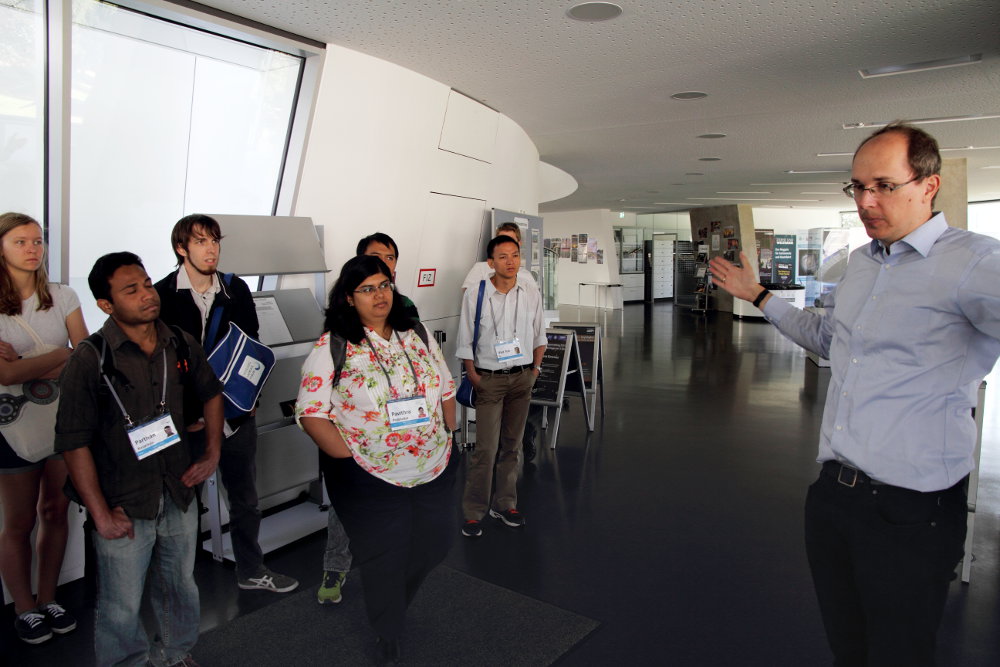HLF goes Heidelberg: Haus der Astronomie and MPI for Astronomy
Wednesday is an unusual day at HLF: No lectures or workshops; instead, plenty of mobility. In the morning, some of the laureates visit local schools to interact with the students; the young researchers visit local scientific institutions. In the afternoon, there is a joint excursion – this year, to Technikmuseum Speyer.
For me, Wednesday at HLF is a day of putting on a different hat: Off with the blogger cap, and on with the hat that I wear for my day job as managing scientist of Haus der Astronomie (HdA), a center for astronomy education and outreach on the campus of the Max Planck Institute for Astronomy. HdA and HLF are siblings – Klaus Tschira is a father to both; in particular HdA’s galaxy-shaped building, which is based on a design idea by Tschira, and was constructed by his foundation.

Giving tours of HdA is frequently part of my job, but the young researchers from HLF are my favorite kind of visitor. They are, of course, highly intelligent, ask lots of questions – and certainly don’t let you get away with anything in your answers. They have a good foundation in mathematics, which makes some kinds of explanation easier, but most of them have no training in astronomy – so some of what I tell them about astronomical research at the Max Planck Institute for Astronomy will actually be new to them. It’s a fairly ideal combination.

This year’s group included around 20 participants; young researchers plus Fields medalist Andrei Okounkov. The group started out in the infrared lab of the MPI for astronomy, with Ulrich Grözinger giving a lively introduction to infrared space observations – including a number of demonstrations.
Then we went over to Haus der Astronomie (HdA), whose galaxy shape prompted discussions of galaxies, their evolution, and the size of their central black holes. To scale for Haus der Astronomie, the central black hole would be smaller than an atom. (But then, Haus der Astronomie is not to scale in one important respect: Compared to its horizontal section, it’s much too high – galactic disks are very flat; to scale, HdA would be less than a meter high.)

The tour concluded with a virtual journey to the edge of the observable universe in HdA’s Klaus Tschira Auditorium, which features a digital planetarium.
The only disadvantage of this arrangement is that I’ll never get to see how the laureates interact with the pupils when they visit local schools. Could someone please blog about that?

